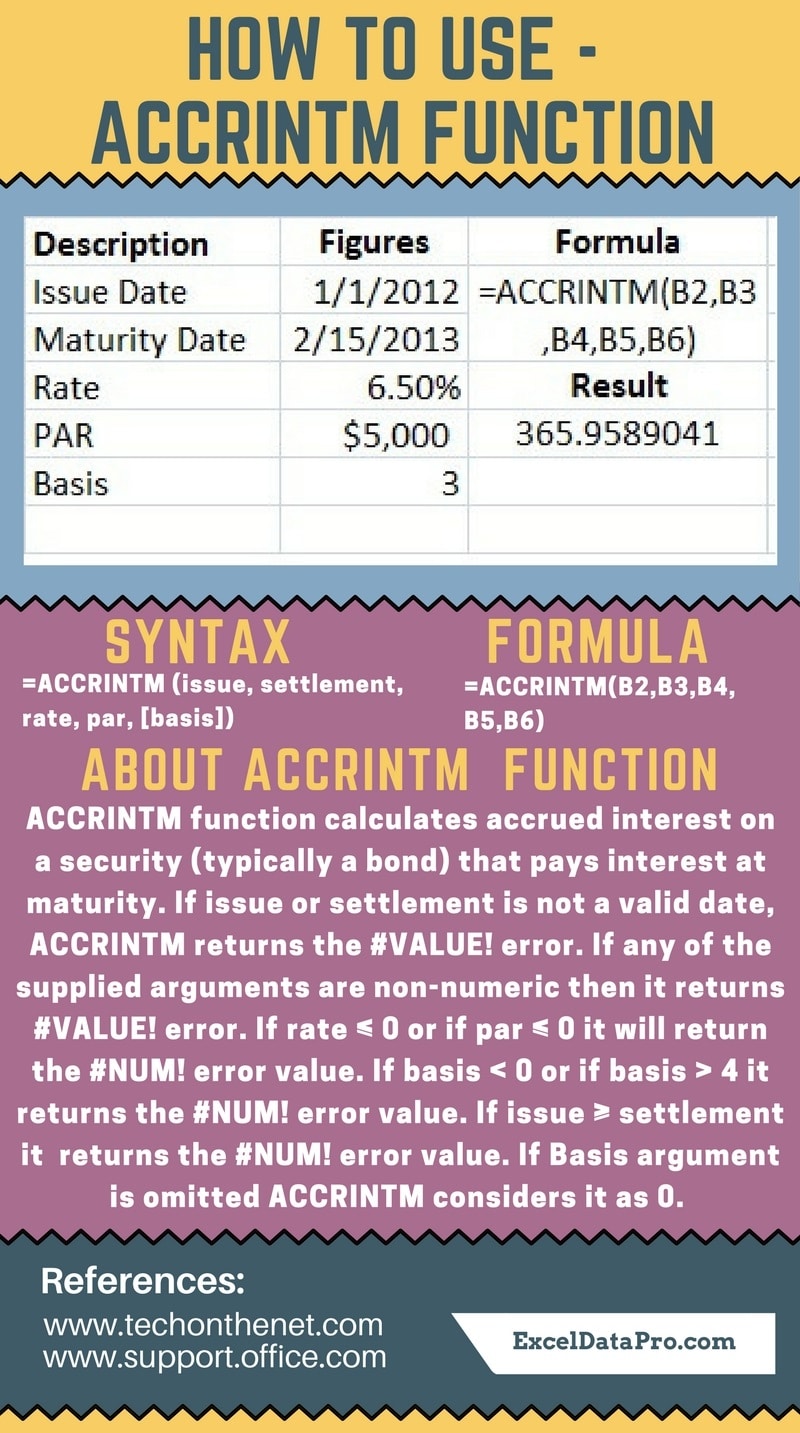
ACCRINTM function returns the accrued interest for a security that pays interest at maturity.
Whereas the ACCRINT function returns the accrued interest for a security that pays interest on a periodic basis.
The ACCRINT function is an inbuilt function in Excel. It is in the category of Financial Functions.
It is used as a worksheet function. You can enter the ACCRINT function as part of a formula in a cell of a worksheet.
Microsoft Excel stores the dates as sequential serial numbers so they can be used in calculations.
By default, it takes January 1, 1900, as serial number 1. In VBA, serial number 1 is December 31, 1899, rather than January 1, 1900.
Syntax for ACCRINTM Function
=ACCRINTM(issue, settlement, rate, par, [basis])
Arguments
Issue: The security’s issue date.
Maturity: The security’s maturity date.
Rate: The security’s annual coupon rate.
Par: The security’s par value. If you omit par, ACCRINTM uses $1,000.
Basis: The type of day count basis to use. It is an optional argument. Basis can be any of the following:
0 or omitted = US (NASD) 30/360
1 = Actual/actual
2 = Actual/360
3 = Actual/365
4 = European 30/360
ACCRINTM is calculated as follows:
ACCRINTM = par x rate x A/D
A = Number of accrued days counted according to a monthly basis. For interest at maturity items, the number of days from the issue date to the maturity date is used.
D = Annual Year Basis.
We have created the infographics for the ACCRINTM Function. With the help of these infographics, you can easily learn step by step process for using this excel functions.
Furthermore, Excel consists of many inbuilt functions which are helpful in the analytical and statistical study of number.
Simply follow the instructions in the infographics below:

Issue, settlement, and basis are truncated to integers.
Errors
If issue or settlement is not a valid date, ACCRINTM returns the #VALUE! error.
If rate ≤ 0 or if par ≤ 0, ACCRINTM returns the #NUM! error.
If basis < 0 or if basis > 4, ACCRINTM returns the #NUM! error.
If issue ≥ settlement, ACCRINTM returns the #NUM! error.
To learn other function like ACCRINT, AMORLINC and ZTEST Functions, please click on the name of the function.
Additionally, you can download other accounting templates like Break Even Analysis Template, Salary Sheet Template and Invoice with GST Template from here.
We thank our readers for liking, sharing and following us on different social media platforms.
If you have any queries please share in the comment section below. I will be more than happy to assist you.
Leave a Reply